Modular crop scouting robot Tom lets SRC swarm out globally

Small Robot Company (SRC) has launched version 4 of its crop scouting robot Tom. The new modular design of Tom V4 will also be the basis for the Dick and Harry robots, that are expected as a commercial product in 2024 and 2025.
The modular design of the crop scouting robot offers a big advantage, says CMO Sarra Mander of the Small Robot Company. “Our new modular robot architecture enables our robots to share 80% of the hardware, 90% of the electronics and all of the deployed software. This helps us to achieve the ultimate aim of improving scalability, reducing development time and simplifying support challenges.”
The modular platform will allow the British start-up to scale internationally, to build more robots and cover much larger farms. It also provides the company with a configurable platform to deploy multiple technologies and applications.
Text continues below video
Optimise farmers’ existing sprayer equipment
The company says that the first per plant monitoring services from Tom V4 will optimise farmers’ existing sprayer equipment to reduce costs and inputs, by treating only the problem areas. SRC expects to cut herbicide applications by around 77%, based on 2021-2022 field trials, and fertiliser by an estimated 15%.
Up to 90% of inputs are wasted. This is not economically or environmentally viable
“With input costs on the rise, farmers are increasingly under pressure”, Sam Watson Jones, President and co-founder of SRC says. “Up to 90% of inputs are wasted. This is not economically or environmentally viable. Fertiliser alone is a major contributor to agricultural emissions.”
Text continues below image
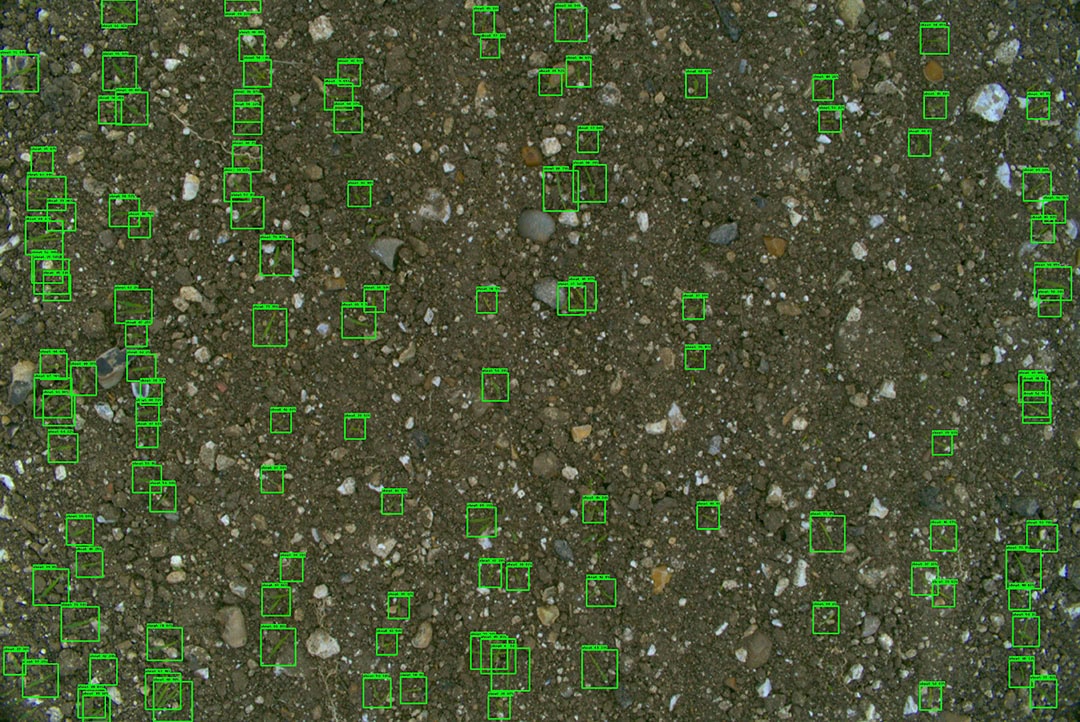
Non-chemical weeding and precision spraying
Currently, non-chemical weeding and precision spraying are being progressed in trials. There are proof of concept projects undertaken for various functions, including non-chemical weeding with electricity (Rootwave) and so called ‘SlugBot’ and ‘SprayBot’ spot spraying projects, all grant funded by Innovate UK. Precision spraying via sprayer integration is already commercial. Commercial trials for robotic action are anticipated for 2023 and 2024.
Also read: Monitoring robot Tom sets out to help farmers control weeds
“In addition, the modular design makes it easier to adapt the design to tackle different crops, to operate at different heights, and for larger areas also to link the robots together to increase coverage”, Ms Mander says.
15,000 images for every hectare
The crop monitoring robot Tom geolocates and analyses data on every plant in the field with 8×6 megapixel cameras, gathering 15,000 images – or 40Gb of per plant intelligence – for every hectare. Tom V4 has eight cameras rather than six.
“This means Tom V4 now delivers a ground sample distance of 0.28mm per pixel, among the highest resolution of any crop-scanning technology”, Ms Mander emphasises. “This gives Tom the capability to see individual water droplets on leaves and early signs of disease outbreak, and, importantly, allows us to identify broad leaf and grass weeds at an earlier growth stage.”
SRC is providing farmers with a green-on-green sprayer export for broad-leaved weeds, as well as crop plant counts and biomass assessments to inform the variable rate application of nutrients.
Text continues below image
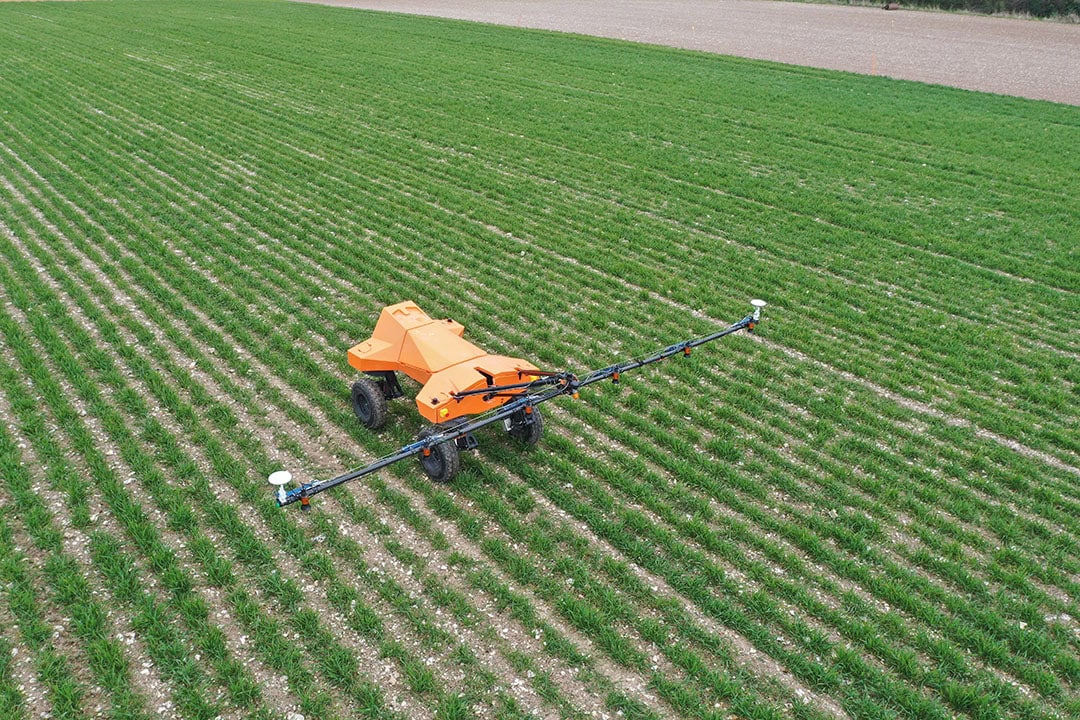
Strong interest in crop scouting robot
The British start-up is currently rolling Tomv4 out onto 20 farms and is delivering SRC’s first commercial services for per plant farming. The company says farmer interest in the crop scouting robot has been strong, with services fully subscribed for 2023. A further 100 farmers have signed expressions of interest for 50,000+ hectares potential future service. Five corporate trials are also pending, with a further seven in negotiation.
Ms Mander: “The fact that we can integrate with, and optimise, existing machinery is extremely compelling. Our business model has made the service accessible to farmers with as little as 20 hectares, without a costly machinery outlay. This means farmers can begin the transition to per plant farming with minimum inconvenience.”
Text continues below image
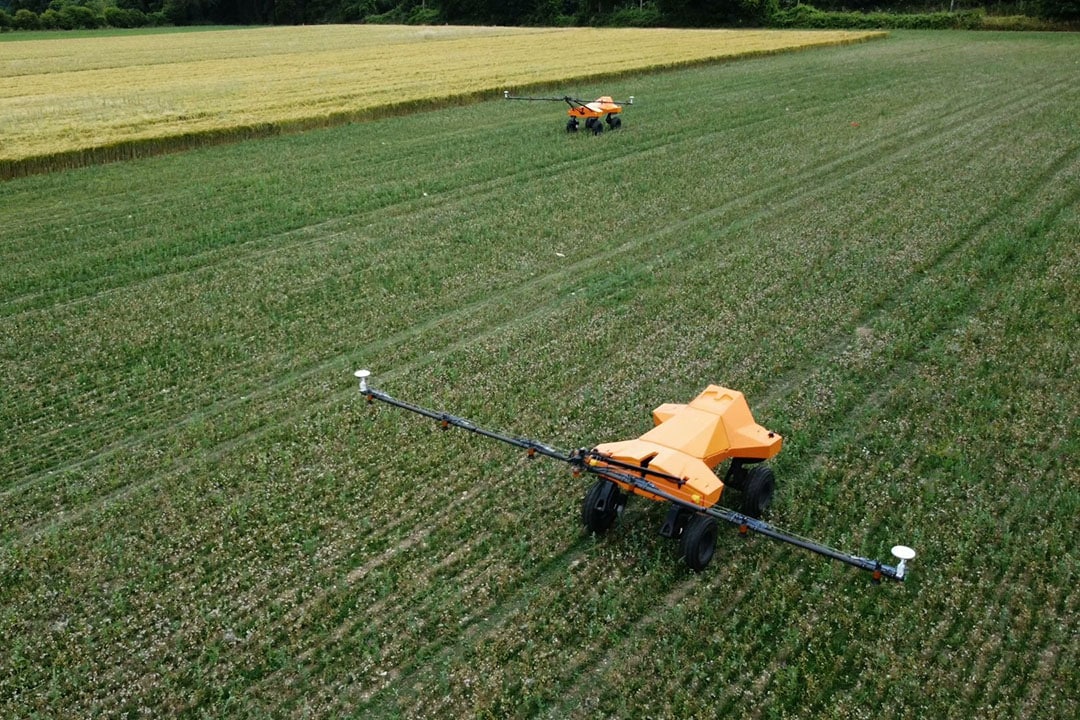
New markets for crop scouting robot Tom
SRC currently has five Tom V4 robots operational and under manufacture. The number of new Tom V4’s build in 2023 is yet to be confirmed, subject to additional commercial orders. But the start-up also aims to take its robots to other markets. Its priority markets are North America and South America, Australia and Europe. The next market for expansion will be Canada.
It’s the great plains of North America that will make us grow into the multi-billion-dollar opportunity
“We can certainly build a very successful business just in the UK alone. And Europe is also a strong opportunity we are exploring through potential trials. But it’s the great plains of North America that will make us grow into the multi-billion-dollar opportunity. In particular, it is the sheer scale of the market opportunity. The Canadian grain market is 14 to 15 times the size of the UK market on its own, and the US is even bigger than that. Increasing coverage allows us to increase the value a robot can deliver and therefore providing more value to the farmer.”
Text continues below image
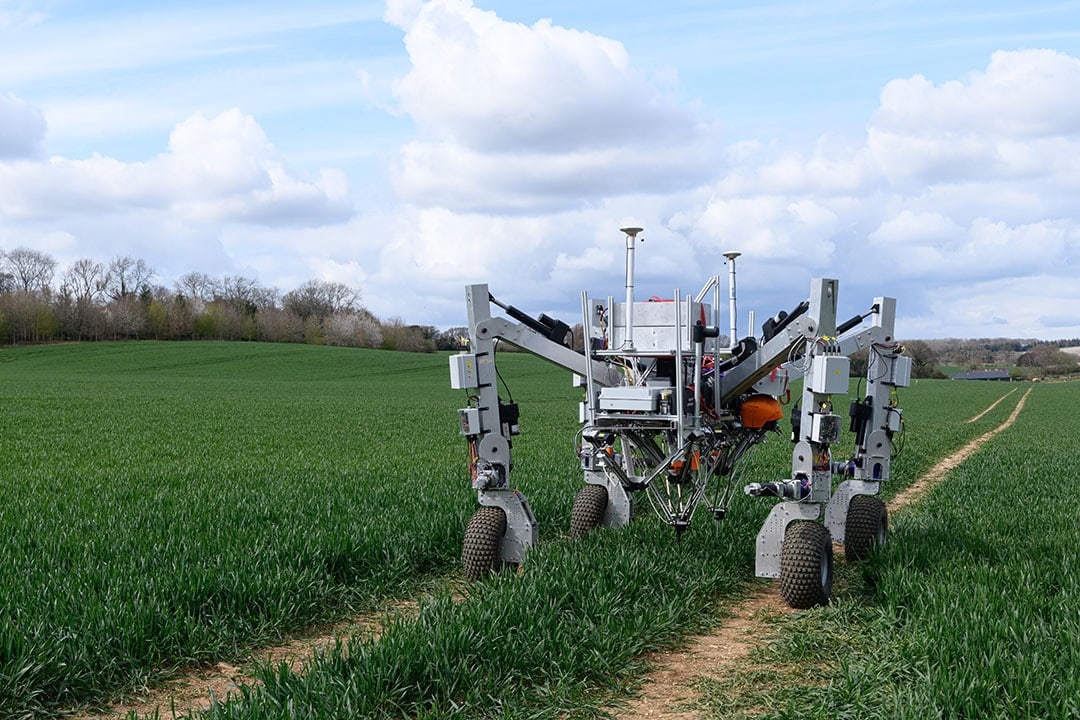
Expand to other crops
At the moment, the Tom V4 service is used in wheat crops in the UK market. In the next phase, the SRC wants to include barley, oil seed rape and also (partner dependent) corn/maize. “In addition, we are looking to expand into other crops that allow us to improve the utilisation of our robots throughout the year. Ultimately, we aim to service all grain crops, including soya.”
With its per plant service Tom V4 can already, commercially in field, identify early growth stage weeds, detecting individual plants, giving farmers the ability to take precise action on that basis. “In addition, because we take a data-led approach, we are not limited to one crop care function such as weeding”, Ms Mander points out.
Text continues below image

Optimising fertiliser treatment
“Commercially this year, we are also looking to optimise fertiliser treatment using plant counts and biomass assessments to inform variable rate nitrogen application. Future services, currently in research and development, include disease identification and fungicide treatment.”
According to the SRC, Tom V4’s per plant data has a great potential for the Corporate Agri-science industry. “Tom’s capabilities include precisely geolocated per plant data, precise plant counts, and extremely high-resolution plant images, with the opportunity for every field to become a trial plot.”
Tom will eventually also get biodiversity indicators and multiple sensor. This is currently still in research and development.
“We are exploring different options for the product roadmap, and cannot confirm more details at this stage. We have successfully trialled integrating sensors such as soil sensors and weather data sensors to proof-of-concept stage. Regarding biodiversity indicators, we have successfully completed a pilot looking at earth worm middens to proof-of-concept stage.”
Soil samples
The initial proof-of-concept trials were conducted using SRC’s Tom monitoring robot to take soil samples with PES Technologies’ soil health sensor mounted on the robot. The sensor detects Volatile Organic Compounds (VOCs) released from soil.
In a wider project, the sensor output is being correlated with information of more than 10 soil health indicators, including microbial biomass and soil organic matter content. The project consortium comprises PES Technologies, Small Robot Company, NIAB-EMR, HL Hutchinson Limited, the University of Essex and the Natural Resources Institute at the University of Greenwich. The project is funded by the government’s Innovate UK grant programme.
Robot Dick will ultimately cover all aspects of crop care, using robotic per plant action, Ms Mander points out. “The focus for development is non chemical weeding and spot spraying. Currently developed to Technology Readiness Level 4. Proof-of-concept trials for Dick include non-chemical weeding, spot spraying and biological slug treatment with nematodes applied as a spot-spray.”
Text continues below image
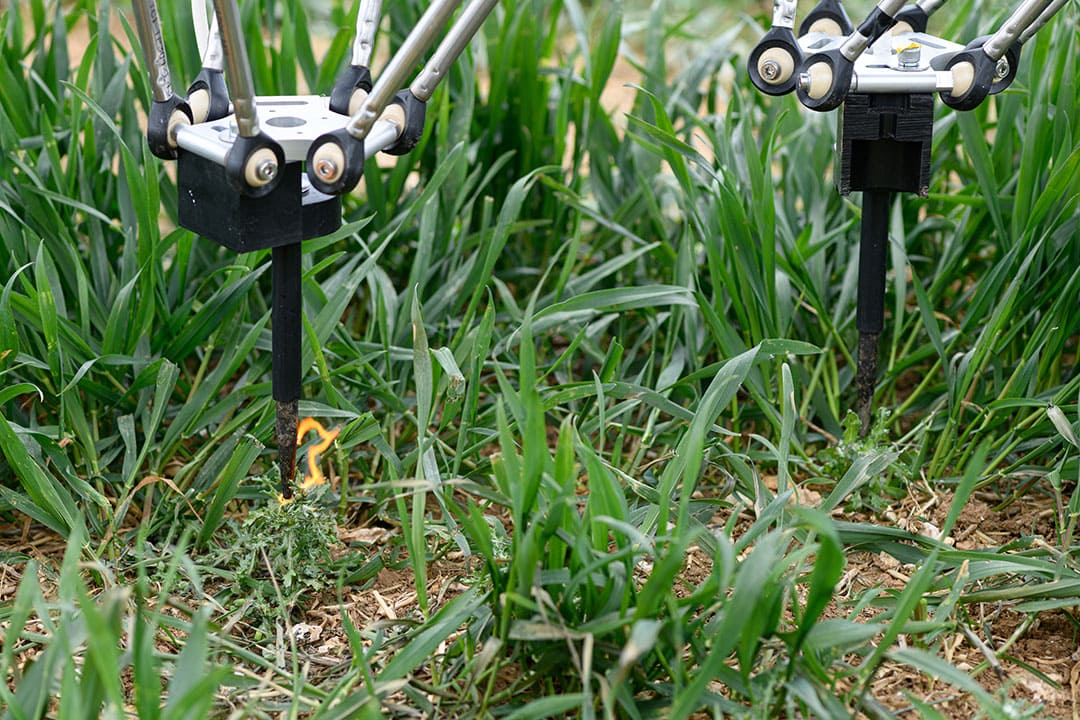
No-till digital drilling robot Harry
Robot Harry will be a no-till digital drilling robot, currently developed to Technology Readiness Level 3. The company already has an artificial Intelligence advice engine, named Wilma, through which it provides the treatment maps and advice to farmers.
David Miller is one of the first farmers to use SRC’s commercial services. “The sprayer integration is the main factor that convinced me to sign up”, he explains. “Our sprayer has GPS shut-off capabilities, so when spraying the field, the robot can tell the sprayer where the weeds are and where it needs to spot spray, so that we can adopt a more targeted approach in what weeds we are trying to control. Environmental considerations are particularly important to us here.”
Tom V4 has four-wheel drive, and a survey speed of 2.2ha per hour, and a 1.5 meter per second forward speed. With a weight of 350.6 kg, Tom V4 has a static ground pressure of <31kPa – equivalent to less than a third of a human foot. Tom V4’s navigation system uses a Swiftnav GPS system with 2 GNSS receivers to provide RTK position with a 1cm accuracy. Tom uses 4 (1.56 kwh) rechargeable batteries and has data storage capacity of 4TB (removable drive).
Join 17,000+ subscribers
Subscribe to our newsletter to stay updated about all the need-to-know content in the agricultural sector, two times a week.



